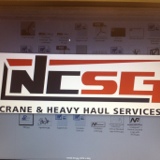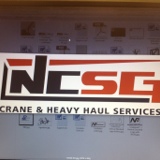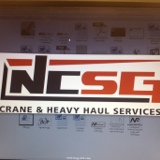Information
-
Audit Title
-
Document No.
-
Client / Site
-
Conducted on
-
Prepared by
-
Location
-
Unit Make and Model
-
Unit Number
-
Personnel
Safety
-
FLRA filled out correctly and appropriate hazards identified?
-
Fall zone/lift area flagged off to prevent un-necessary workers from entering
-
Pre-lift meeting has been held?
-
Competent riggers/signallers assigned and identified?
-
Appropriate PPE worn for the task being performed?
Rigging
-
Rigging used, hitch used, hitch capacity
-
Load weight indetified?
-
Add Load Weight Here
-
Load stable? C of G accounted for?
-
Load rigged correctly?
-
Total Number of Slings used in Configuration
-
Enter WLL for Single Vertical Leg Here
-
Enter Sling Angle Here
-
Enter Angle of Choke Here
-
Softeners used required and used?
-
Slings have no twists in them?
-
Enter Total Capacity for Configuration used
Slings
-
Enter type and quantity of slings being used
-
Slings do not meet the rejection criteria for removal from service and are safe to use?
-
Slings Inspected Annually?
-
Slings Inspected before use?
-
Tag is readable and has required information?
-
Current colour coding correct?
Shackles
-
Enter the quantity, make and WLL of shackles being used here:
-
Have Shackles been inspected annually?
-
Shackles inspected before use?
-
Shackles have no rough edges that may damage synthetic slings?
-
Pin matches body?
-
Shackle does not exceed rejection criteria and is safe to use?
-
Shackle capacity is greater than or equal to the single vertical capacity of the slings being used?
-
Shackle pins firmly seated?
Hooks
-
Enter the number size and WLL of the hooks being used here:
-
Have the hooks been inspected annually?
-
Are the safety catches functioning correctly? (if the hook is designed to have a safety latch, it must have one)
-
Hooks have no rough areas where they may damage synthetic slings
-
Hooks do not exceed rejection criteria and are safe to use?
-
Hook capacity exceeds or is equal to the capacity of the sling being used in it?
-
Are hooks being loaded directly in the saddle of the hook? (angle or point loading is not allowed)
Chain Bridle
-
Enter the WLL, size, number of legs and length of legs here:
-
Has the chain bridle been inspected annually?
-
Has the chain bridle been inspected prior to use?
-
Chain bridle does not exceed the rejection criteria and is safe to use
Below the Hook Lifting Devices
-
List the type, size and WLL of lifting device here: (includes, but not limited to spreader bars, lifting beams, equalizer beams, clamps, forks, etc)
-
Has the device been certified by a professional engineer?<br>(current sticker and paperwork must be availible)
-
The device does not meet the rejection criteria and is safe to use
-
Device has the manufacturer's name, total weight and Working Load Limit displayed on the device?
Miscellaneous Hardware
-
Enter the type, number and WLL of any miscellaneous lifting hardware here: (including but not limited to eye bolt, swivels, bolt on trunions or pad-eyes, etc.)
-
Has the hardware been inspected prior to use?
-
The hardware does not exceed the rejection criteria and is safe to use
Mechanical Lifting Devices (come-along, chain fall, etc.)
-
Enter the type, the number and the WLL of each device here:
-
Device is NOT being used as a sole means of attaching the load to the crane
-
Load is being applied to the device using the handle or chain only.<br>(Load must never be applied to the device using the crane)
-
Safety sling, slightly longer than device, is being used in event of failure.
Behaviour
-
Were any unsafe behaviours observed during this insepction?
-
Enter the unsafe behaviour observed








